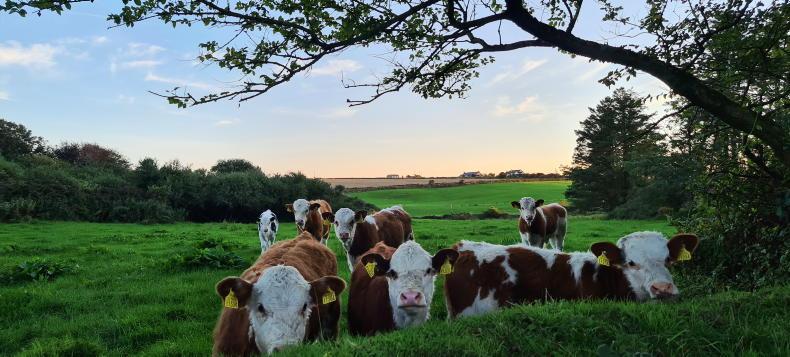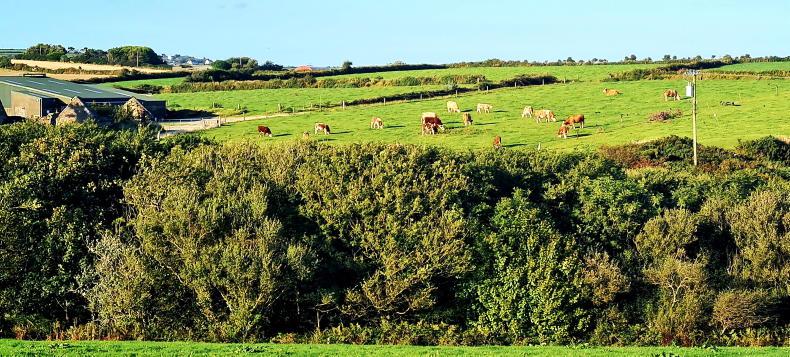Running the clock back to the 2019 beef protests, has there been as intense a period of time in agricultural policy circles as the last two years?
COVID-19 dominated the news and forced us to adapt and as that phases out, CAP, the Nitrates Action Programme and the cloud of carbon budgets take over.
With so many leaks, kites flown and consultations, is there a danger farmers could become so drained they become indifferent to them all? It’s been a big ask of farm politicians to keep the pace.
The Nitrates Action Programme will throw up its fair share of challenges. Some are obvious and we probably all view policy through our own farms initially. We’re in a good position regarding slurry storage, but I’d be concerned for those involved in collaborative farming, especially where yards are involved.
I’m sure it’s covered off in any agreements that were signed, but the question of what investment is needed and who pays is bound to shake things up a bit. Possibly more so in situations where older yards are involved and maybe the landowners would no longer be as familiar with farming and the costs involved as they may have been in the past.

Despite farming in a coastal and part exposed area, trees have a presence on Tommy Moyles's farm.
There’s a small bit of clarity regarding CAP, with the revealing of a selection of eco-scheme options. Looking at them purely from the perspective of my own farm, there are two, possibly three, options that could be straightforward to apply for. However, I suspect the devil will be in the detail.
The extensive livestock production and GPS-controlled fertiliser spreading wouldn’t really fit in, but the others are worth a look.
A rough calculation a few years ago revealed I was penalised on 12% of the land farmed and that figure was before hedgerows and drains were accounted for. It’s land with very high value in terms of biodiversity but heretofore hasn’t been viewed positively by policy makers.
If the ground that was excluded from or penalised in previous CAP incarnations is included in the non-productive areas and landscape features options, then it could be a viable option.

The landscape has determined where trees grow on Tommy Moyles's farm. They are present in sheltered dips and valleys but are not as abundant on the exposed areas.
The limiting use of chemical nitrogen is another potentially easy option for this farm, but is subject to what limit that will be based on. Will it take a set figure nationally across all farms or have a farm-specific reference year? I assume, given the fertiliser register isn’t in place, it will apply across all farms in a similar manner to the current organic nitrogen limit.
The planting of native trees per eligible hectare is another measure that could work out on this farm too, but is a measure that could have a lot of pitfalls. Will some native trees be more important than others? Like, will a hawthorn tree be classified as a tree or will it be considered a hedge plant only. In the case of leased land, if the landowner isn’t a tree fan, what do you do? Locations too will come into play. I’ve become a bit more aware of where they are located on the farm of late and while it will be more challenging to plant trees in exposed areas, it’s not impossible. That measure will require a bit more cost and work load than the others though.
On matters of a more certain nature, weaning has commenced, with the first bunch of weaned calves making short work of the good grass covers left after ideal growing conditions in September.
Running the clock back to the 2019 beef protests, has there been as intense a period of time in agricultural policy circles as the last two years?
COVID-19 dominated the news and forced us to adapt and as that phases out, CAP, the Nitrates Action Programme and the cloud of carbon budgets take over.
With so many leaks, kites flown and consultations, is there a danger farmers could become so drained they become indifferent to them all? It’s been a big ask of farm politicians to keep the pace.
The Nitrates Action Programme will throw up its fair share of challenges. Some are obvious and we probably all view policy through our own farms initially. We’re in a good position regarding slurry storage, but I’d be concerned for those involved in collaborative farming, especially where yards are involved.
I’m sure it’s covered off in any agreements that were signed, but the question of what investment is needed and who pays is bound to shake things up a bit. Possibly more so in situations where older yards are involved and maybe the landowners would no longer be as familiar with farming and the costs involved as they may have been in the past.

Despite farming in a coastal and part exposed area, trees have a presence on Tommy Moyles's farm.
There’s a small bit of clarity regarding CAP, with the revealing of a selection of eco-scheme options. Looking at them purely from the perspective of my own farm, there are two, possibly three, options that could be straightforward to apply for. However, I suspect the devil will be in the detail.
The extensive livestock production and GPS-controlled fertiliser spreading wouldn’t really fit in, but the others are worth a look.
A rough calculation a few years ago revealed I was penalised on 12% of the land farmed and that figure was before hedgerows and drains were accounted for. It’s land with very high value in terms of biodiversity but heretofore hasn’t been viewed positively by policy makers.
If the ground that was excluded from or penalised in previous CAP incarnations is included in the non-productive areas and landscape features options, then it could be a viable option.

The landscape has determined where trees grow on Tommy Moyles's farm. They are present in sheltered dips and valleys but are not as abundant on the exposed areas.
The limiting use of chemical nitrogen is another potentially easy option for this farm, but is subject to what limit that will be based on. Will it take a set figure nationally across all farms or have a farm-specific reference year? I assume, given the fertiliser register isn’t in place, it will apply across all farms in a similar manner to the current organic nitrogen limit.
The planting of native trees per eligible hectare is another measure that could work out on this farm too, but is a measure that could have a lot of pitfalls. Will some native trees be more important than others? Like, will a hawthorn tree be classified as a tree or will it be considered a hedge plant only. In the case of leased land, if the landowner isn’t a tree fan, what do you do? Locations too will come into play. I’ve become a bit more aware of where they are located on the farm of late and while it will be more challenging to plant trees in exposed areas, it’s not impossible. That measure will require a bit more cost and work load than the others though.
On matters of a more certain nature, weaning has commenced, with the first bunch of weaned calves making short work of the good grass covers left after ideal growing conditions in September.








 This is a subscriber-only article
This is a subscriber-only article










SHARING OPTIONS: